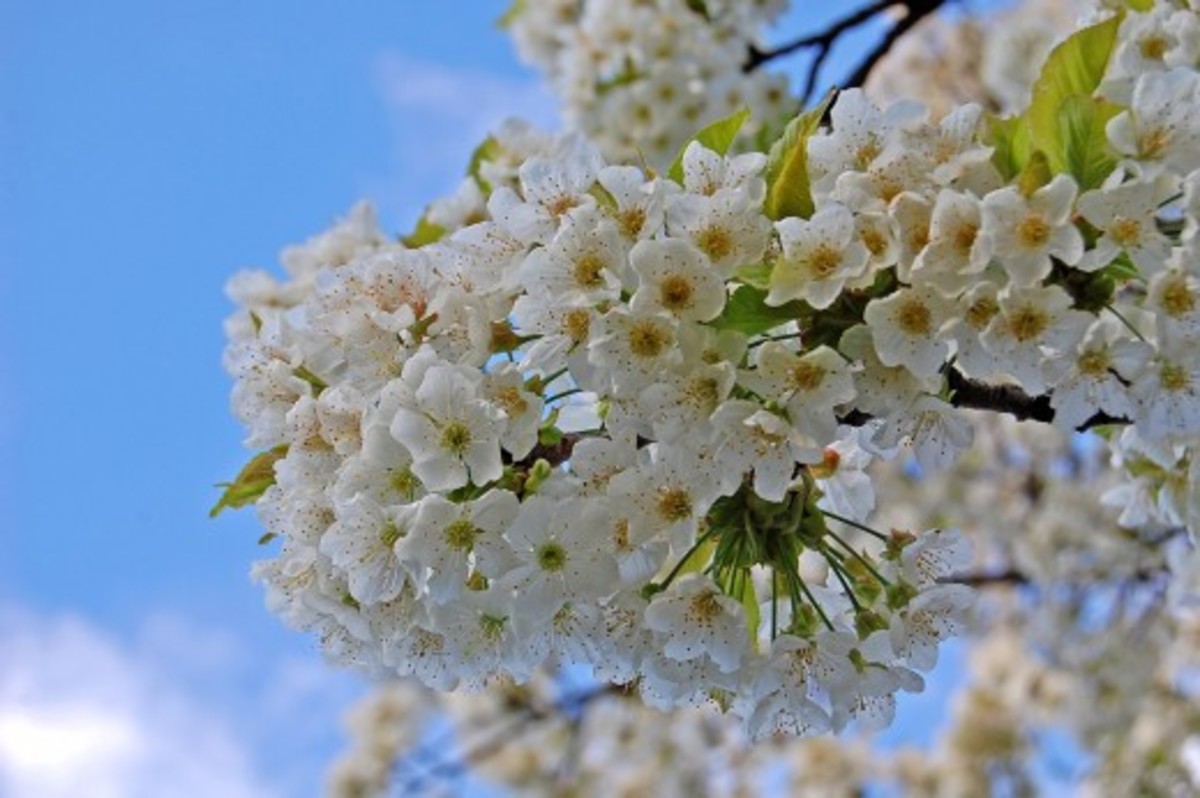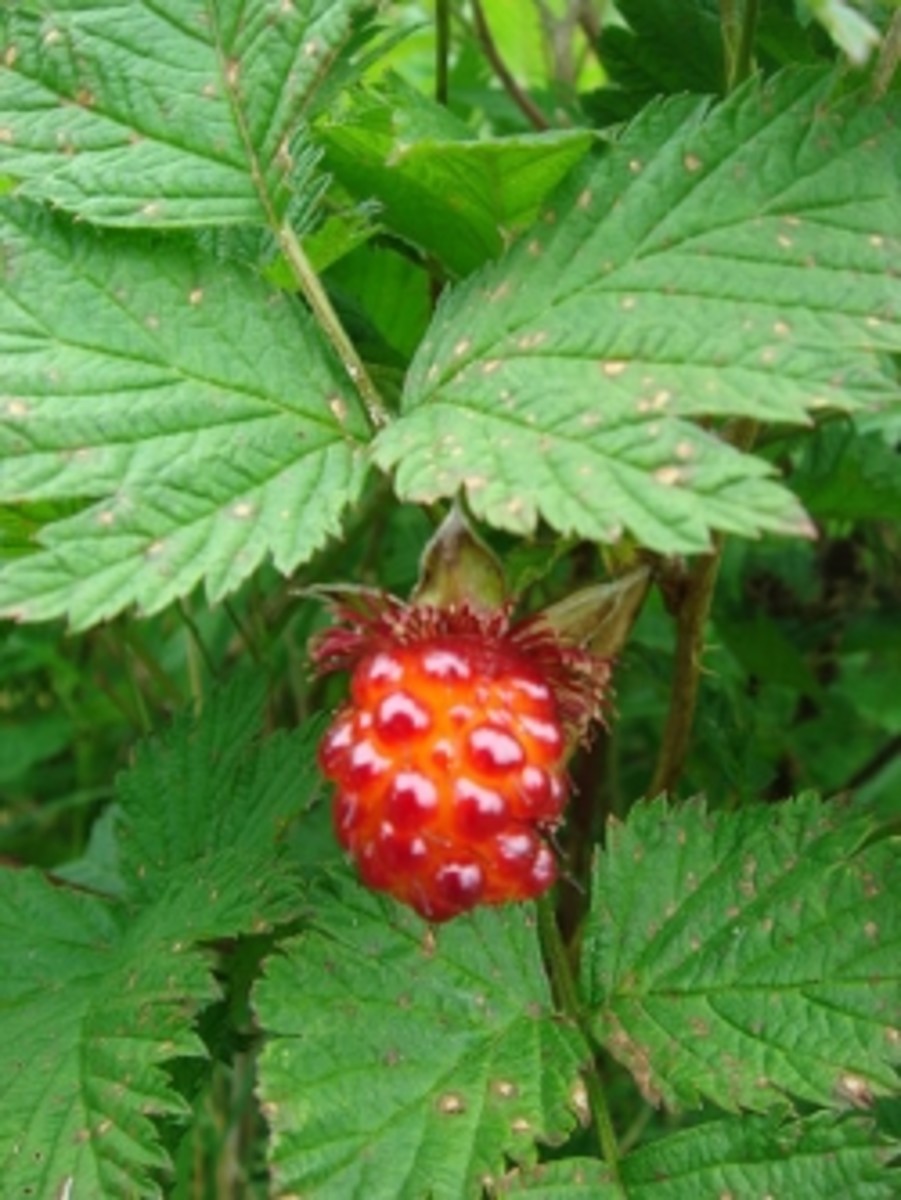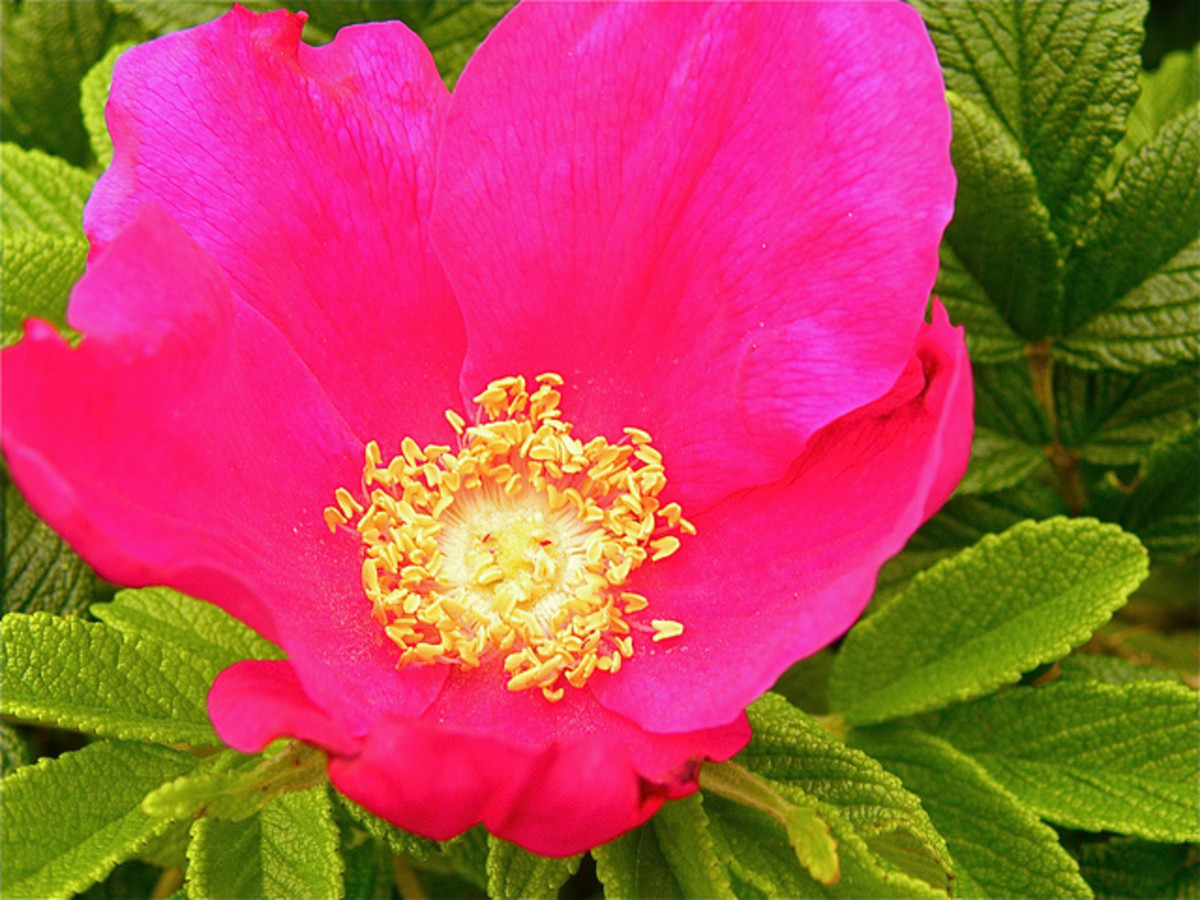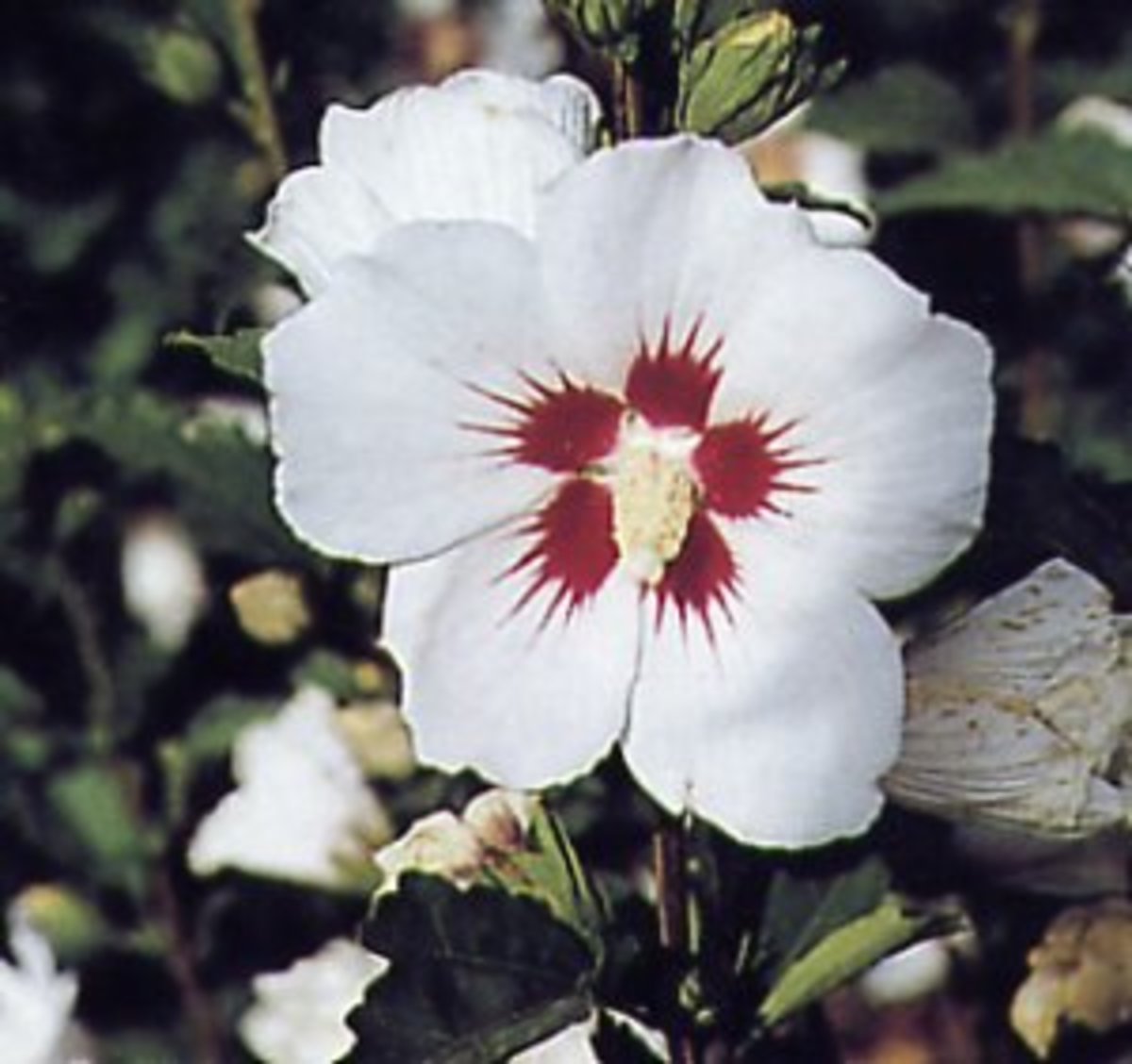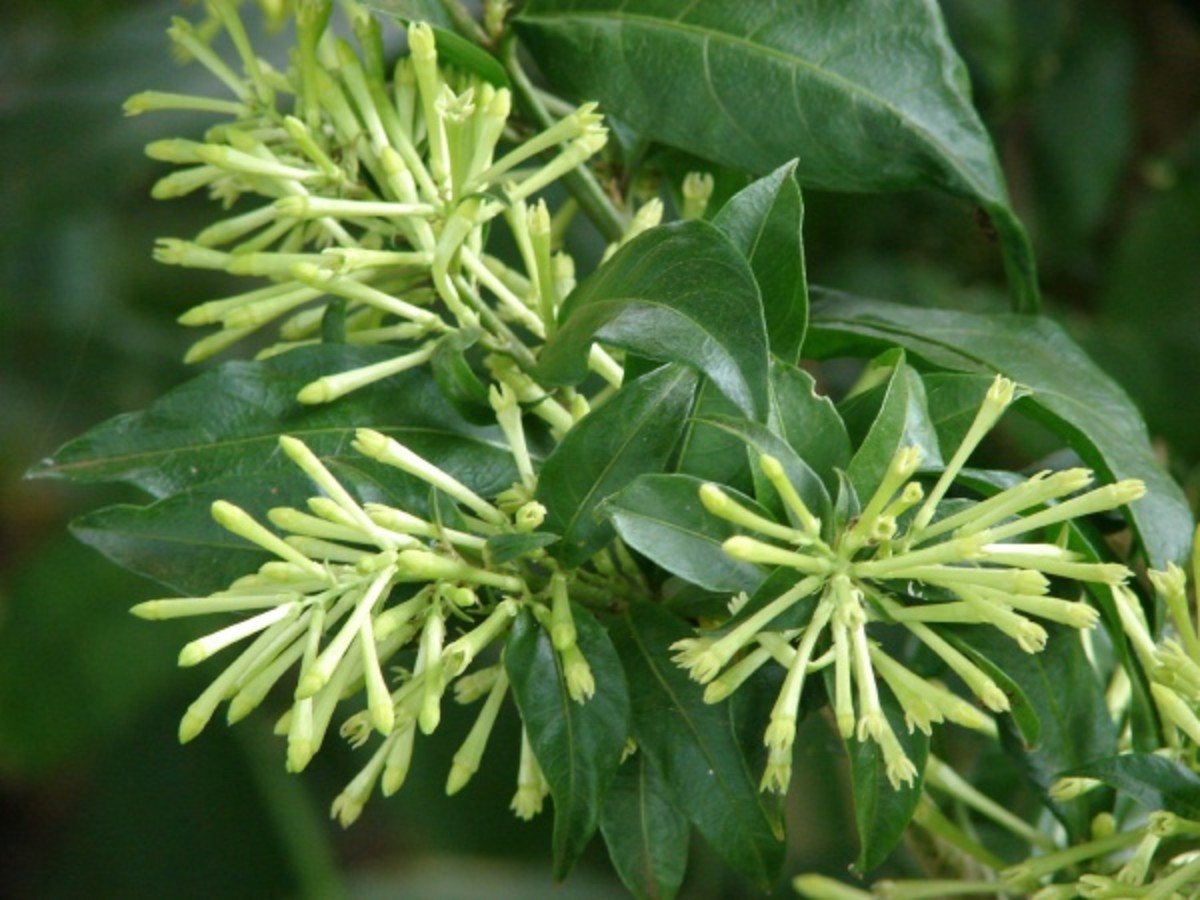Striking North American Shrubs
Striking North American Shrubs
Sometimes it's easy to forget about the importance of shrubs. They are not only visually beautiful in the garden, but in the wild, they are but one more component of a vital part of Mother Nature's plan.
One usually thinks of a shrub as quite tall, rather like a small tree, or at least like a bush, yet some shrubs creep along the ground and others climb high into the trees. Many small so-called trees, are in fact a tall growing shrub.
To put it as plainly as possible, a shrub is a woody plant that does not die down to the ground each winter, but keeps its side shoots from year to year, breaking into bloom each season from buds on these shoots.
Trees, especially when growing in a grove or forest, soon lose their side branches at the base of the trunk as they grow taller, and shoot up into tall shafts crowned by most of the branches growing in a head. Upright shrubs, on the contrary, retain their lower branches more frequently and become "busy" in appearance.
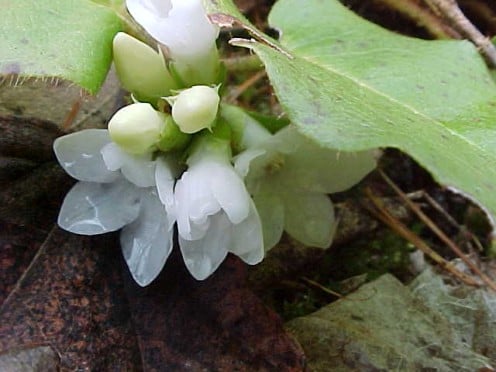
The Trailing Arbutus (aka Mayflower)
Among the shrubs that creep is one that grows in many parts of Eastern North America, but is particularly dear to the people of Massachusetts. It is the Trailing Arbutus.
It grows during the summer, shooting out long branches that trail along the ground, taking root here and there. Its leaves are oval, or almost round in outline, leathery, rigid, and evergreen.
By autumn, the clustered buds at the end of the hairy twigs are almost ready to open. However, they do not do so.
Cold weather sets in, and leaves drift over the plants, and singularly protected by them, the Trailing Arbutus waits until the spring sun warms it. Then, the flowers have but little growing to do, and soon open.
Without doubt they were the first pretty flowers that the Pilgrims may have found. "Mayflowers" are a common name in some localities, and in others the plant is known as the "May Pinks."
The flowers themselves are salver-shaped, waxen, and pink or white. They have a delicious "woodsy" fragrance that reminds one of sweet birch or of wintergreen, the spicy little green shrub that is so close a relative of the Trailing arbutus.
With the laurel, the Azalea, and the Bear Berry, the Trailing Arbutus belongs to a large plant family -- that of the heaths-- which contains a great many odorous white or rosy-flowered shrubs.
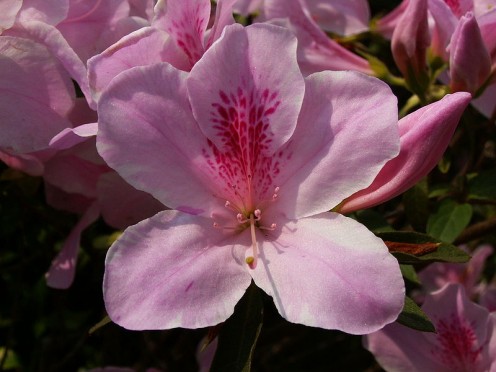
Whitsuntide (White Sunday)
The old fashioned words, "Whitsuntide" and "pinxter " are terms most of us today aren't familiar with. What they refer to is the seventh Sunday and 50th day after Easter).
In old time European religions, white robes were worn by those baptized on Whitsunday (White Sunday), which was followed by:
- Whitmonday
and
- Whittuesday
Pink And White Azalea (aka Pinxter-Flower)
The lovely Pink Azalea, or Pinxter-flower, as it is quaintly known from its habit of blooming about Whitsuntide, or Pinxter, in early spring -- is also called wild honeysuckle.
The reason for this last common name, is that its lovely coronets of delicately cut, long-tubed flowers, poised on slender, brittle stems do suggest that they are honeysuckles, except for their color. The resemblance is aided by the quintet of very long stamens and two pistils, which are thrust out far beyond the petals.
This character would lead one to suppose that wind carried the pollen from flower to flower. However, the pollen grains are so coated with a viscid substance that strings of them may be drawn from the anther cells by the slightest touch of the finger. This leads us to believe that insects are the messengers desired.
The rich fragrance of the Pink and White Azalea would also seem to be an attraction for insects.
There is one notable variety of this plant, the White Azalea, that blooms in midsummer in swamps, that is still more fragrant than all the others.
Azalea Gardens
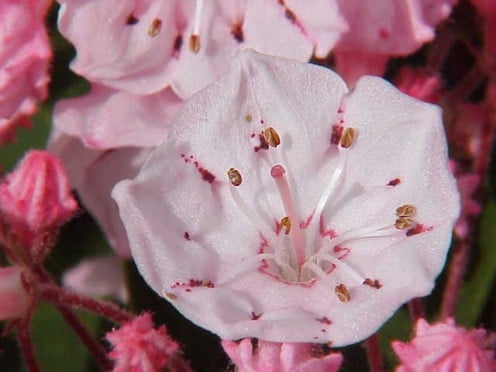
Mountain Laurel (aka Kalmia)
The Mountain Laurel, is very closely related to the Azalea, however, it is scentless. But so brilliant is the display of its bloom on this evergreen shrub, which sometimes grows ten feet or more high -- that no odor seems necessary even at night.
It bears great flat topped masses of flowers, ranging in hue from white to deep pink, set off, like an old-fashioned bouquet, by a slaver of stiff shining lance-shaped leaves, very dark green in color.
Each flower is worth studying. It is like a saucer which as a five-sided, rather than circular, rim. At each angle, and in each space between the angles, is a small pocket which projects on the outside like a little knob.
Look at a newly opened flower and you'll see that each one of the ten pockets has the tip of one of the ten stamens safely stowed away within it. Its filament springs in an arch from the center of the blossom.
If you were to run a pencil over the tops of the arches, you would probably jump with surprise, for every one of those stamens has jerked its tip out of its pocket and is standing stiffly erect.
Now, if your pencil had been a blustering bumblebee, he would have been well thumped by the up-springing stamens, and well dusted by the pollen jerked out of the open mouths of the pair of quaint jugs that form the anthers. The bumblebee would have flower away disgusted, and lit on another flower, whose trap had been previously sprung, perhaps, and would have rubbed off some powder on to the ready stigma.
In the past, masses of laurel leaves are stripped from the bushes and used for holiday decorations, as they endure transportation well.
Note: One should be careful about throwing them, when discarded, within reach of young browsing animals, for this foliage contains a poison more deadly than strychnine, and many animals have been killed by eating the young seedling plants, instead of wintergreen, which they much resemble -- although they lack the spicy taste.
Additionally, honey made from laurel bloom is also said to poison those who eat it.
It is also believed that the narrow-leafed Mountain Laurel, which is smaller, with darker, smaller flowers is know as sheep-laurel or lamb-kill -- showing that its dangerous qualities are suspected.
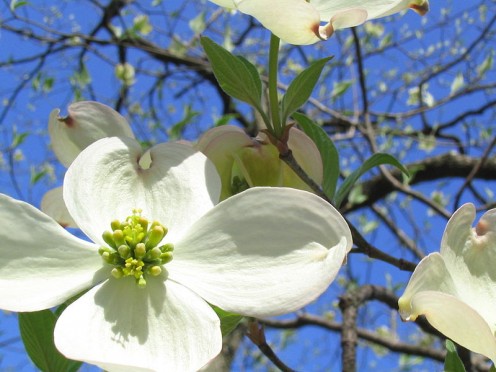
Flowering Dogwood
In many parts of America, the Flowering Dogwood is one of the most welcome sights each spring. Found in the same woods as well as those farther south, and very widely distributed are the Dogwood Trees, (which is actually a shrub) the name being borrowed from a small European tree closely related to it.
There was a time when it's bark was used for a very healing wash for dogs, hence the "dog" part of the shurb's name.
In may, they become snowy banks of bloom, but each apparent blossom is masquerading in a white domino. In the center of the large white petals -- as those who are not botanists very naturally call them -- which form the domino, are grouped the maskers or real flowers -- each quite complete in itself -- a pale, somewhat slender floret, four-parted at the margin.
The snowy, striking petals are really "bracts" (a form of leaf) which cover the true flowers in the little square buds.
At that time, they are quite green, but gradually become white as they unfold and expand. They serve to attract insects by making the tiny flowers very conspicuous, and also provide a platform upon which flying creatures may alight, so that they may search easily for, and suck up, the nectar from the very bottom of the yellow flower vases.
If we wish to see how the Dogwood flowers would look without their brilliant bracts, we may search in thickets or in woods for other varieties, mostly low shrubs.
Some of them are quite common along roadsides, while others, and especially the Round-leaved Dogwood, prefer shady and rocky woodlands. The latter has a flat-topped cluster of starry flowers, a little larger than those of the Flowering Dogwood, and quite white, but it has no brilliant bracts.
Flowering Dogwood
Wild Red Cherry
The Native Peoples of this country probably could not get much comfort out of the Wild Red Cherries, for the flesh is very thin and very sour, but birds gorge themselves upon the plentiful scarlet fruit. Additionally, at least one other little animal, the gray chipmunk nibbles away at them wherever it can reach the clusters of fruit.
When in flower, this slender little tree shrub of our rocky woods is wreathed in a veil of tiny, star-like, snow-like blossoms.
It would be well to regard this cherry with some suspicion, however, -- for the leaves of the more common Black Cherry, with racemes of fragrant flowers and shining black fruit, are very dangerous to cattle (when partly wilted, especially).
Caution: It is also probable that other species would be equally so weary, as the seeds inside them are a wonderfully active and prompt poison "prussic acid." Inside the stomach it sets free the poison and can be lethal. The pits have a bitter taste and odor of bitter almonds.

